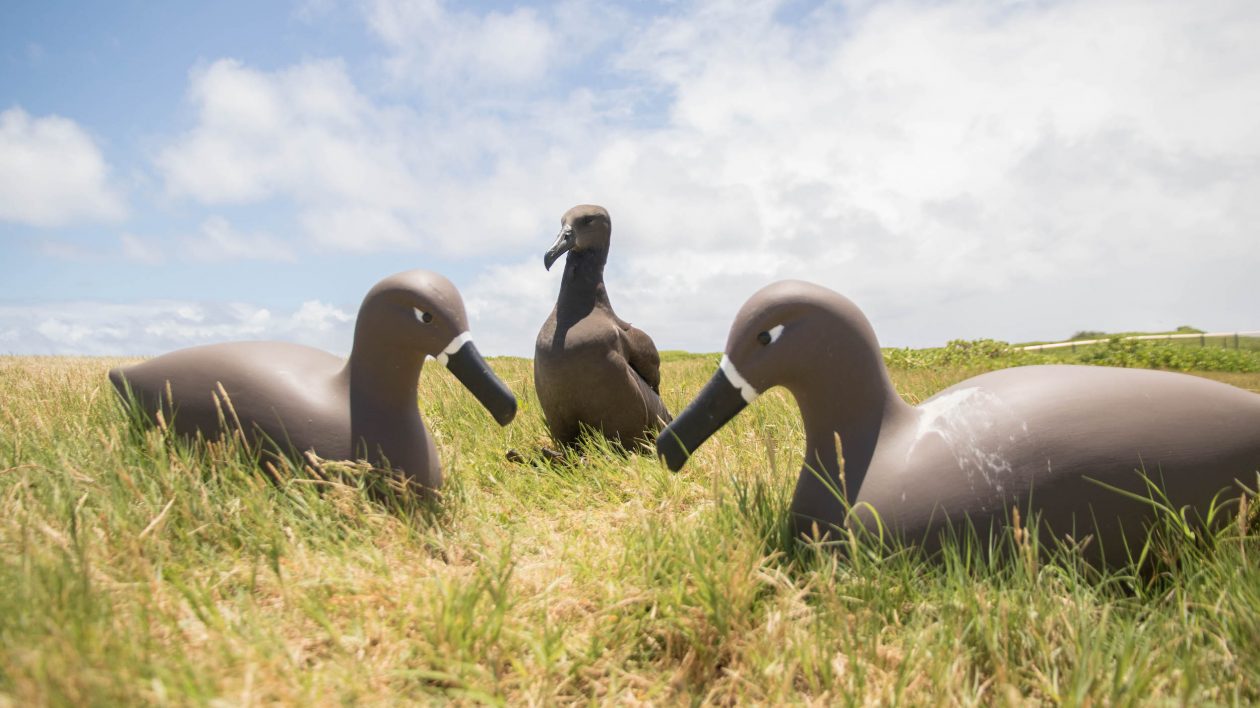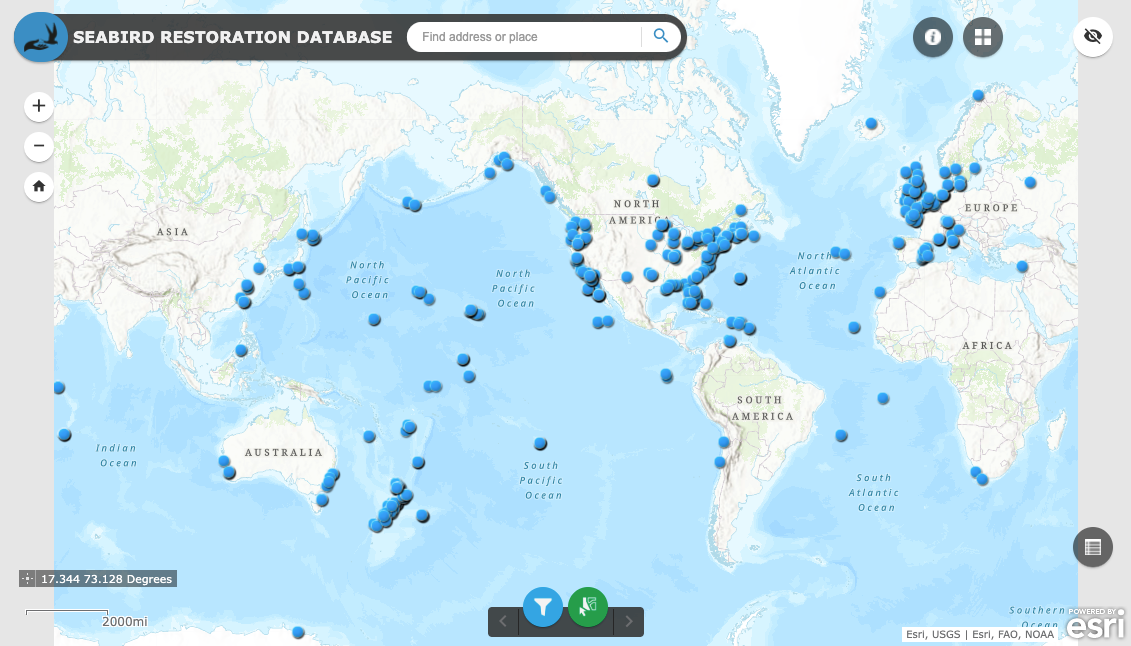
A Black-footed Albatross between two decoys; photograph by Lindsay Young, Pacific Rim Conservation
The recently released Seabird Restoration Database owned and managed by the Hawaiian-based Pacific Rim Conservation is described as “a unique global product presenting practitioners with real world examples of active seabird restoration efforts from around the world.”
Active Seabird Restoration is defined on the project’s website as the “deliberate attraction or movement of seabirds to establish or enhance a colony. Social attraction uses stimuli such as sound and decoys to lure seabirds into a restoration site while translocation is the physical movement of seabirds from a source colony to a restoration site. In many cases, both methods are used to restore a seabird colony. The Seabird Restoration Database seeks to improve knowledge transfer among practitioners and enhance seabird conservation by documenting the methods and outcomes from social attraction and translocation activities applied to restore and recover seabird populations around the world”
The database’s website explains “Thanks to the generous support from the Packard Marine Bird Program, and the knowledge contributions of seabird experts from around the world, we built the Seabird Restoration Database, a first of its kind conservation database documenting the global effort to restore seabirds using active restoration techniques. Between 2020-2021 we collated data from the literature, reports, databases and consulted with over 500 seabird experts to determine the species, locations, methods, and outcomes from active seabird restoration efforts. The database now contains over 800 records of ongoing, planned, complete, and incomplete active restoration efforts, including those with under achieved outcomes. Project justifications include both restoration goals and trials/experiments applied to inform future conservation activities.”

Read more about the database here.
John Cooper, ACAP Information Officer, 23 May 2022

 Français
Français  English
English  Español
Español